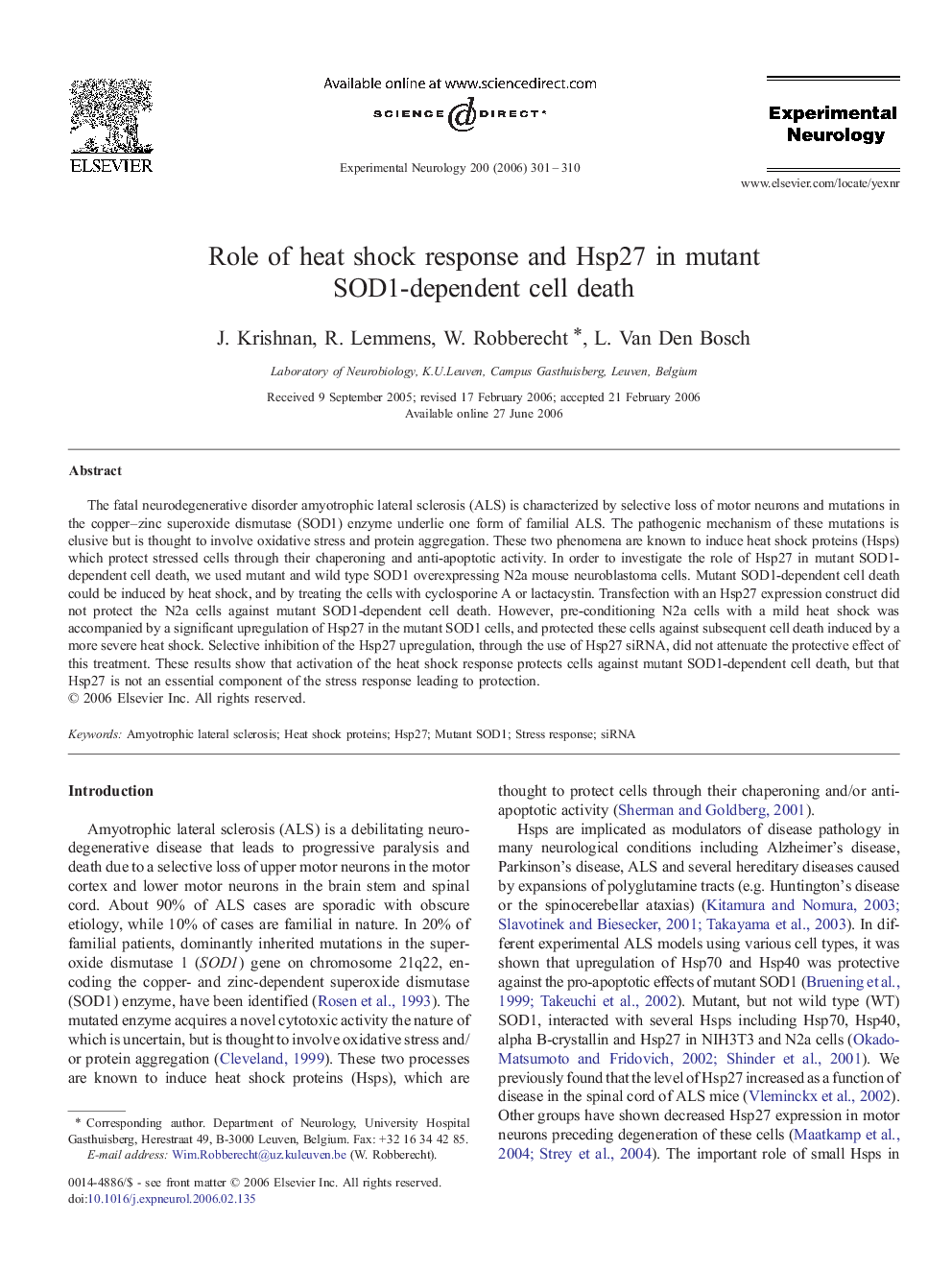| Article ID | Journal | Published Year | Pages | File Type |
|---|---|---|---|---|
| 3057066 | Experimental Neurology | 2006 | 10 Pages |
The fatal neurodegenerative disorder amyotrophic lateral sclerosis (ALS) is characterized by selective loss of motor neurons and mutations in the copper–zinc superoxide dismutase (SOD1) enzyme underlie one form of familial ALS. The pathogenic mechanism of these mutations is elusive but is thought to involve oxidative stress and protein aggregation. These two phenomena are known to induce heat shock proteins (Hsps) which protect stressed cells through their chaperoning and anti-apoptotic activity. In order to investigate the role of Hsp27 in mutant SOD1-dependent cell death, we used mutant and wild type SOD1 overexpressing N2a mouse neuroblastoma cells. Mutant SOD1-dependent cell death could be induced by heat shock, and by treating the cells with cyclosporine A or lactacystin. Transfection with an Hsp27 expression construct did not protect the N2a cells against mutant SOD1-dependent cell death. However, pre-conditioning N2a cells with a mild heat shock was accompanied by a significant upregulation of Hsp27 in the mutant SOD1 cells, and protected these cells against subsequent cell death induced by a more severe heat shock. Selective inhibition of the Hsp27 upregulation, through the use of Hsp27 siRNA, did not attenuate the protective effect of this treatment. These results show that activation of the heat shock response protects cells against mutant SOD1-dependent cell death, but that Hsp27 is not an essential component of the stress response leading to protection.
